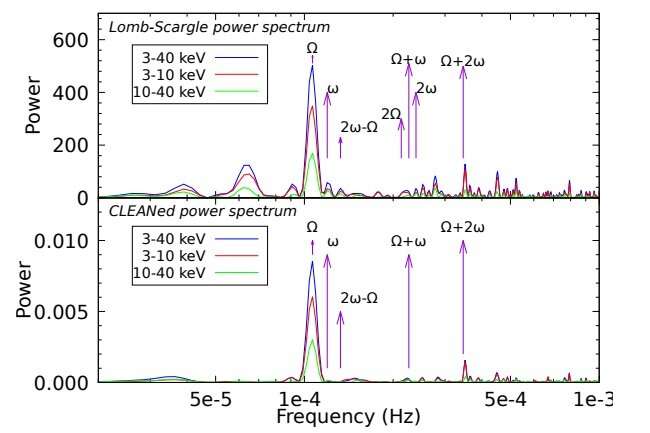June 27, 2022 report
Study explores the properties of a unique intermediate polar

Using data from ESA's XMM-Newton satellite and NASA's NuSTAR space observatory, Indian astronomers have performed a broadband X-ray analysis of a unique intermediate polar known as Paloma. Results of the study, published June 17 on arXiv.org, shed more light on the properties of this object.
Cataclysmic variables (CVs) are binary star systems consisting of a white dwarf accreting material from a normal star companion. They irregularly increase in brightness by a large factor, then drop back down to a quiescent state. Polars are a subclass of cataclysmic variables distinguished from other CVs by the presence of a very strong magnetic field in their white dwarfs.
In some CVs, accretion occurs through a truncated accretion disk when the white dwarf is moderately magnetic. These systems are known as intermediate polars (IPs). Observations have shown that in IPs, the magnetic white dwarf (WD) spins asynchronously with the orbital period of the system and therefore produces a rapid oscillation with the spin period. Therefore, determining precise spin period and precise oscillation ephemeris could be the key to reveal the IP nature of some CVs.
Paloma (other designations: RX J0524+42 and 1RXS J052430.2+424449) is a unique intermediate polar in which this WD asynchronism is much less (at a level of 14%) compared to other IPs (typically about 90%). Therefore, in order to gain more insights into this peculiarity and to reveal the general properties of Palomar, Anirban Dutta and Vikram Rana of Raman Research Institute in Bangalore, India, investigated this source.
"Using the broadband X-ray data, simultaneously obtained from XMM-Newton and NuSTAR, we tried to give an overall description of the spectral properties of the system, along with the temporal behavior of the system extending all the way up to 40 keV," the researchers wrote in the paper.
The observations found that orbit-folded light curves exhibit a single broad hump-like structure with strong dips for soft to medium X-rays (0.3–10.0 keV). The astronomers assume that this is due to emission seen from at least one pole at any point of time during the orbital motion of the white dwarf in Paloma. It was added that these dips arise due to the presence of a complex inhomogeneous absorber.
According to the paper, this absorber showcases a significant variation with orbital phase. Its maximum contribution during the orbital phase was estimated to be between 0.1 and 0.22. The researchers suppose that this absorber is presumably contributed from accretion curtain or stream, including the pre-shock flow.
Furthermore, the collected data allowed the researchers to measure the mass and radius of Paloma's white dwarf. They found that its mass is about 0.74 solar masses, while its radius is estimated to be approximately 7,400 kilometers. The authors of the study also detected ionized emission lines in the soft X-rays of Paloma and a neutral iron K-alpha line, which is weaker than the ionized lines.
More information: Anirban Dutta, Vikram Rana, Study of Complex Absorption and Reflection in a Unique Intermediate Polar Paloma. arXiv:2206.08635v1 [astro-ph.HE], arxiv.org/abs/2206.08635
© 2022 Science X Network





















